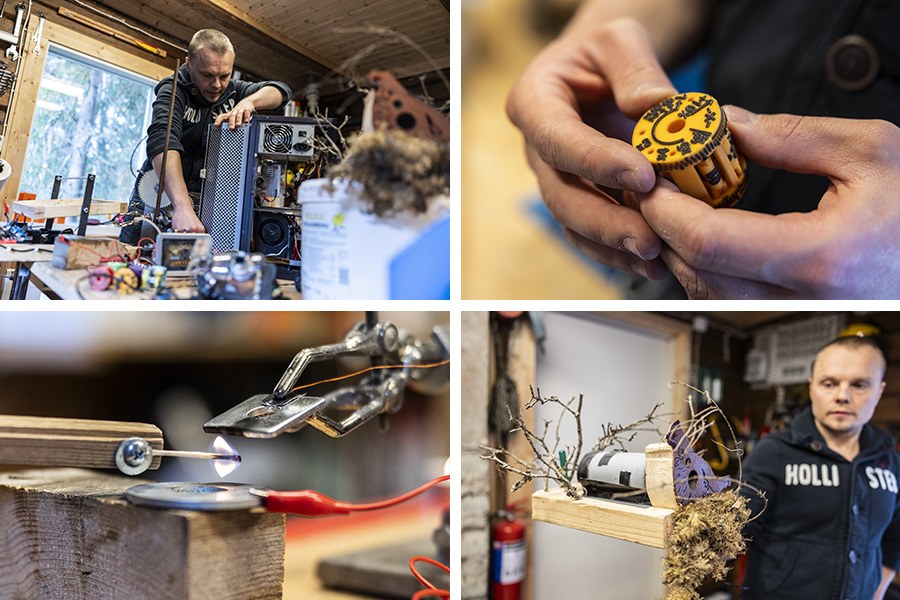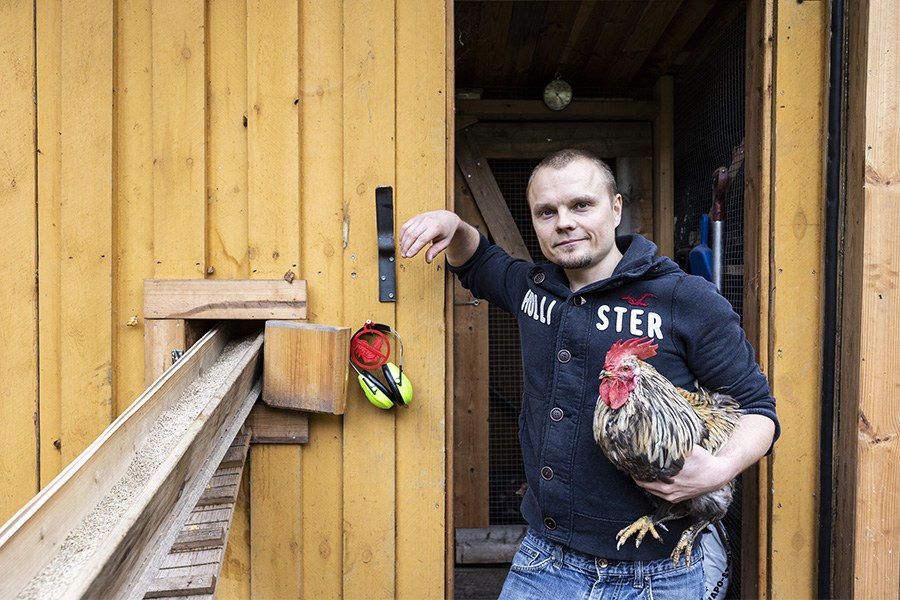Ilmari Tamminen wants to use his inventions to help others and secure his creative career

Tamminen is a born inventor. In his view, inventiveness is an integral part of humanity and evolution. Also Tamminen’s family seems to have special inventive genes; early on, for example, his grandfather built a rudimentary telephone connection between his home and his workshop, and an electromechanical predatory bird-like scarecrow on the kitchen garden.
The first doctoral research publication and the previous master’s thesis of Tamminen, who works in the Computational Biophysics and Imaging Group, focused on the application of chemical and immunological background contrasting methods for so-called three-dimensional X-ray microscopy. Resources allocated to research have brought new humility and responsibility to his inventing.
“In the past, making inventions was mainly a quick joy and a benefit for my everyday life. Today, I try to combine making meaningful and fascinating invention with responsibility as well. I focus more on scalable inventions that could benefit the wider society,” Tamminen points out.
In his doctoral dissertation study, he is currently developing a statistical analysis software that can be applied not only to imaging data, but also in other scientific contexts. The aim of the study is to bridge the gap between the state-of-the-art statistical techniques and other disciplines so that statistical tools are easily accessible to all those who need them. Inventiveness has been needed to solve key technical problems also in the dissertation.
Tamminen uses both in his applied research and at his workshop an invention of inventions he has developed: a brainstorming method 2.0 that conforms to nature’s laws of probability in solving problems that require creativity. A scientific article he has written on the method is currently under peer review.
There are tools for inventing and developing thinking
According to Tamminen, good tools for inventing include curiosity, rationality, courage to experiment and discard, and good notes. The ability to envision and see a step forward are also important qualities. Although genes have contributed to his advancement, Tamminen says that one can also develop as an inventor.
“There are tools for inventing, such as a conventional brainstorming session known to everyone, but also many other ways to organise and anticipate creative work. And there must be a lot of ideas! One must not fall in love with them, but must be willing to cut them hard,” Tamminen says.
In his sideline company Vaakalintu Oy, he develops the small fish processing concept that received the Martha Association’s Innovation Award in 2019. To learn how instrumentation amplifiers work, he has also invented a night vision device controlled by electroencephalographs (link to video). There are ‘numerous other projects between the earth and the sky’ waiting on the ever-growing list of tasks.

Tamminen is driven to invent by an enormous thirst for knowledge, a human tendency, fascinating subjects, satisfaction from solving problems, and service to humanity. He says he gets the most inspiration and motivation for his inventions from nature.
“I have always wanted to understand reality better. What does it mean, for example, when a birch leaf stores the energy of light in sugars, how cells work, what life itself is. Now, in my spare time, I am developing an invention to turn little-appreciated fish such as roaches into an ecologically sustainable delicacy easily. I would like this invention to also increase people’s movement in nature,” Tamminen mentions.
Applied research is largely about inventing
Tamminen’s tactic is to develop an idea very far before making it public. This is how he prioritises his resources for demanding developmental work. He has learned how to write patent applications on courses and with patent attorneys, because an application alone may improve one’s status in important negotiations.
Tamminen’s strategic goal is to secure the continuity of his creative work financially. He is keen to continue working as a researcher in academia and doing business with his inventions. In the future, when competition and financial limitations increase, commercialising the inventions and entrepreneurship may even be necessary for livelihoods.
“I want to encourage all those doing applied research to think about inventing, not only in an academical sense but also commercially. Each action to reduce financial competition means proportionally more resources for the research community. Contact the Innovation Services at your universities, and submit invention disclosures, so that potential inventions can be identified,” Tamminen says.
He is grateful for the support he has received to further his research and inventions. The Innovation Specialists at Tampere University have provided him expert assistance in matters related to inventions and commercialising them.
During the interview, it can almost be seen how Tamminen’s mind is buzzing with new ideas. He says that researching and part-time inventing go well together because he cannot be without thinking. While brain work is rewarding, it also requires recovery. For the entire Tamminen family of four, the greatest source of strength is nature.

Text: Anna Aatinen
Photos: Jonne Renvall






